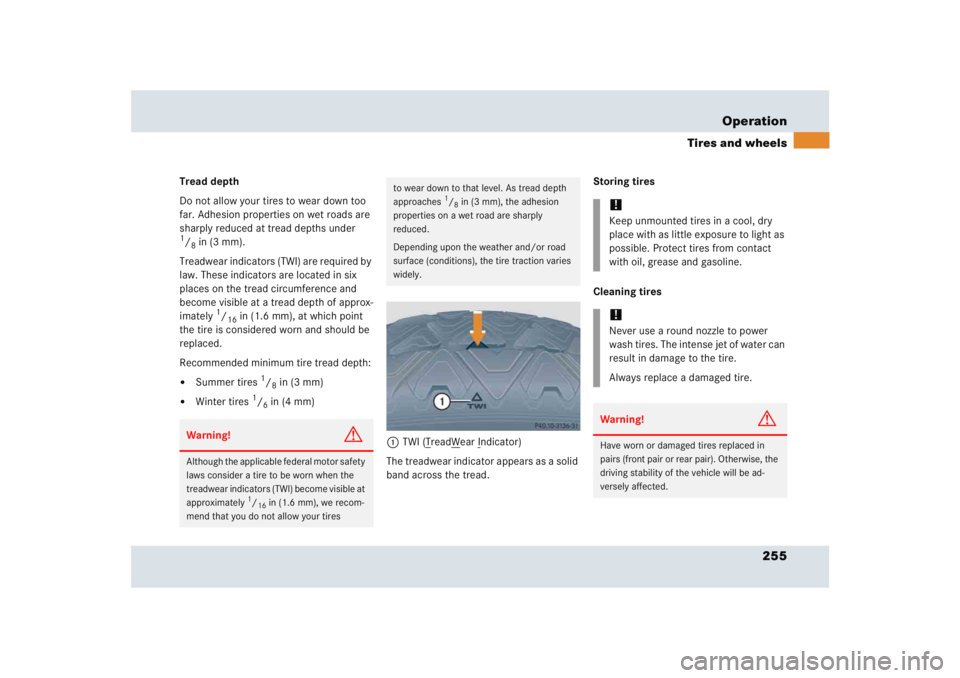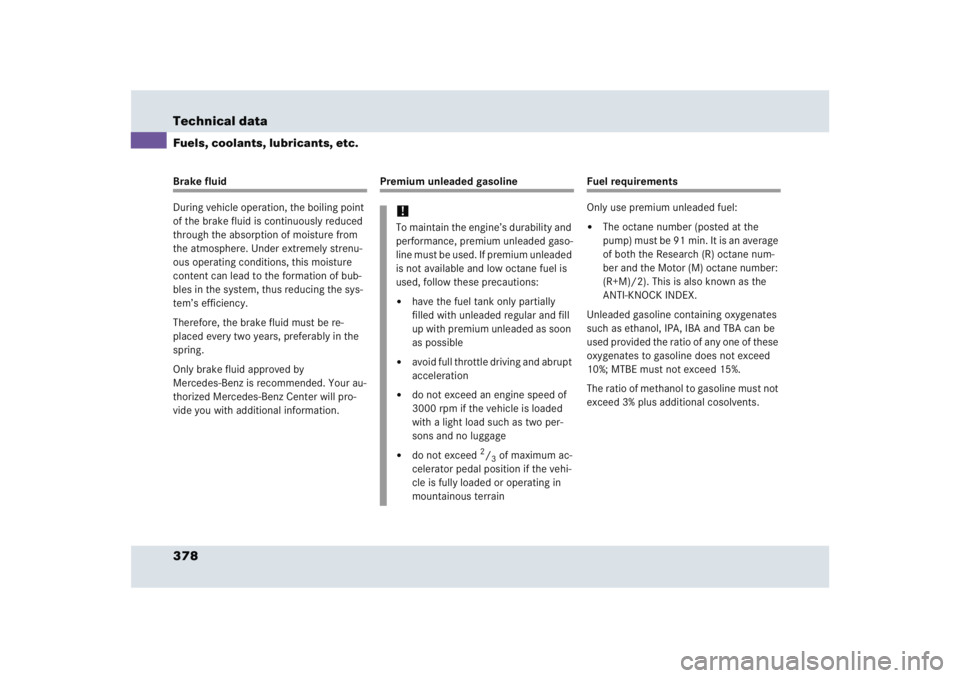Page 11 of 417

ContentsAt the gas station............................... 240
Refueling ...................................... 240
Check regularly and before
a long trip ..................................... 241
Engine compartment.......................... 243
Hood ............................................ 243
Engine oil...................................... 246
Transmission fluid level ................ 248
Coolant......................................... 249
Trunk ................................................. 250
Batteries....................................... 250
Windshield washer system and
headlamp cleaning system ........... 251
Tires and wheels ................................ 253
Important guidelines .................... 253
Tire care and maintenance ........... 254
Direction of rotation ..................... 256
Loading the vehicle ...................... 256
Recommended tire inflation
pressure ....................................... 262
Checking tire inflation pressure ... 264
Tire labeling .................................. 268
Load identification........................ 272
DOT, Tire Identification Number
(TIN) ............................................. 273Maximum tire load ....................... 274
Maximum tire inflation pressure .. 275
Uniform Tire Quality Grading
Standards (U.S. vehicles) ............. 276
Tire ply material ........................... 278
Tire and loading terminology ........ 278
Rotating tires ............................... 281
Anti-theft wheel nuts .................... 282
Winter driving .................................... 284
Winter tires* ................................ 284
Snow chains ................................. 285
Maintenance ...................................... 286
Clearing the maintenance
service indicator........................... 286
Maintenance service term
exceeded ..................................... 287
Calling up the service due date .... 287
Resetting the maintenance
service indicator........................... 288
Vehicle care ....................................... 289
Cleaning and care of the vehicle .. 289
Vehicle washing ........................... 290
Practical hints................................. 294
What to do if ... .................................. 296
Lamps in instrument cluster ........ 296
Lamp in center console................ 303
Vehicle status messages in the
multifunction display.................... 304
Symbol messages ........................ 309
Where will I find ...? ........................... 340
First aid kit ................................... 340
TIREFIT kit, electric air pump,
towing eye bolt and vehicle
literature portfolio ........................ 340
Locking/unlocking in an emergency . 342
Unlocking the vehicle................... 342
Replacing SmartKey batteries ........... 344
SmartKey ..................................... 345
Replacing bulbs ................................. 346
Front lamps.................................. 347
Rear lamps ................................... 347
Replacing the wiper blades................ 348
Removing wiper blades ................ 348
Installing wiper blades ................. 348
Page 256 of 417

255 Operation
Tires and wheels
Tread depth
Do not allow your tires to wear down too
far. Adhesion properties on wet roads are
sharply reduced at tread depths under 1/8in (3 mm).
Treadwear indicators (TWI) are required by
law. These indicators are located in six
places on the tread circumference and
become visible at a tread depth of approx-
imately
1/16
in (1.6 mm), at which point
the tire is considered worn and should be
replaced.
Recommended minimum tire tread depth:
�
Summer tires
1/8in (3 mm)
�
Winter tires
1/6in (4 mm)
1TWI (T
readW
ear I
ndicator)
The treadwear indicator appears as a solid
band across the tread.Storing tires
Cleaning tires
Warning!
G
Although the applicable federal motor safety
laws consider a tire to be worn when the
treadwear indicators (TWI) become visible at
approximately
1/16in (1.6 mm), we recom-
mend that you do not allow your tires
to wear down to that level. As tread depth
approaches
1/8in (3 mm), the adhesion
properties on a wet road are sharply
reduced.
Depending upon the weather and/or road
surface (conditions), the tire traction varies
widely.
!Keep unmounted tires in a cool, dry
place with as little exposure to light as
possible. Protect tires from contact
with oil, grease and gasoline.!Never use a round nozzle to power
wash tires. The intense jet of water can
result in damage to the tire.
Always replace a damaged tire.Warning!
G
Have worn or damaged tires replaced in
pairs (front pair or rear pair). Otherwise, the
driving stability of the vehicle will be ad-
versely affected.
Page 379 of 417

378 Technical dataFuels, coolants, lubricants, etc.Brake fluid
During vehicle operation, the boiling point
of the brake fluid is continuously reduced
through the absorption of moisture from
the atmosphere. Under extremely strenu-
ous operating conditions, this moisture
content can lead to the formation of bub-
bles in the system, thus reducing the sys-
tem’s efficiency.
Therefore, the brake fluid must be re-
placed every two years, preferably in the
spring.
Only brake fluid approved by
Mercedes-Benz is recommended. Your au-
thorized Mercedes-Benz Center will pro-
vide you with additional information.
Premium unleaded gasoline
Fuel requirements
Only use premium unleaded fuel:�
The octane number (posted at the
pump) must be 91 min. It is an average
of both the Research (R) octane num-
ber and the Motor (M) octane number:
(R+M)/2). This is also known as the
ANTI-KNOCK INDEX.
Unleaded gasoline containing oxygenates
such as ethanol, IPA, IBA and TBA can be
used provided the ratio of any one of these
oxygenates to gasoline does not exceed
10%; MTBE must not exceed 15%.
The ratio of methanol to gasoline must not
exceed 3% plus additional cosolvents.
!To maintain the engine’s durability and
performance, premium unleaded gaso-
line must be used. If premium unleaded
is not available and low octane fuel is
used, follow these precautions:�
have the fuel tank only partially
filled with unleaded regular and fill
up with premium unleaded as soon
as possible
�
avoid full throttle driving and abrupt
acceleration
�
do not exceed an engine speed of
3000 rpm if the vehicle is loaded
with a light load such as two per-
sons and no luggage
�
do not exceed
2/3 of maximum ac-
celerator pedal position if the vehi-
cle is fully loaded or operating in
mountainous terrain